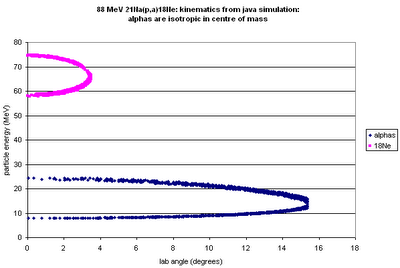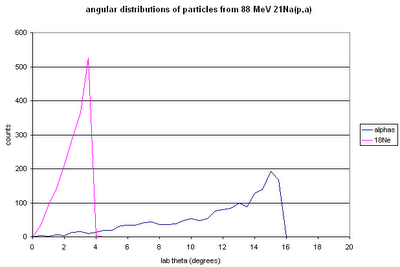I'm assuming isotropic distribution of the alpha particles in the centre of mass. This involves making a very inelegant--but reasonably accurate--transformation from c.m. to lab frames. At some point I'll fix this. Maybe. :-)
I'm also neglecting the effect of the size of the beam spot and all effects of the detectors themselves (energy straggling in the dead layer; granularity of calculated angle due to strip width...)
Here's the kinematic results for the two energies...


and the angular distributions of the particles...


If two S2 detectors are used for the 110 MeV experiment, positioned at 103.4 mm and 333 mm, they catch 1482 of 1834 simulated events (both alpha and 18Ne hit a detector for a given event). 1818 of the 1834 alphas are caught, but only 1482 of the 18Ne: the ones emitted at the smallest angles still escape.
No comments:
Post a Comment